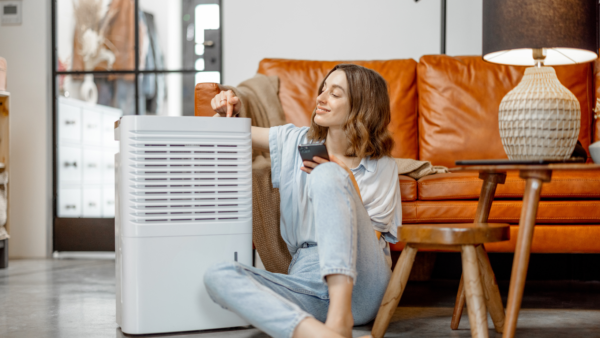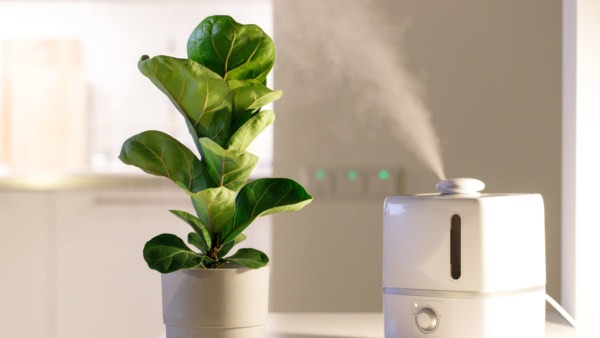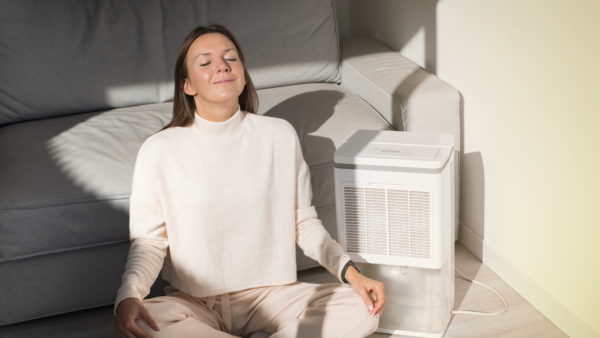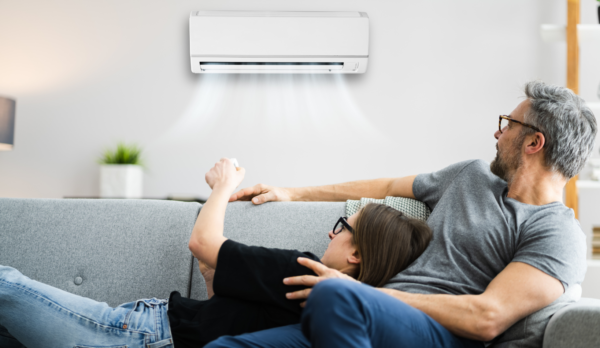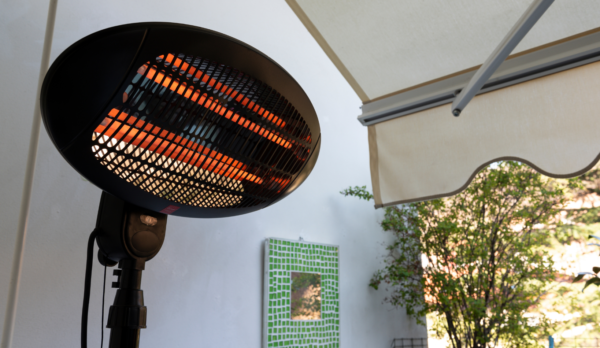The ideal room temperature is a subject of much debate and controversy. For example, some people will say that they feel comfortable when the room is 18-19 °C, while others will argue that the perfect temperature for them is 24-25 °C. But what level of heat is actually optimal?
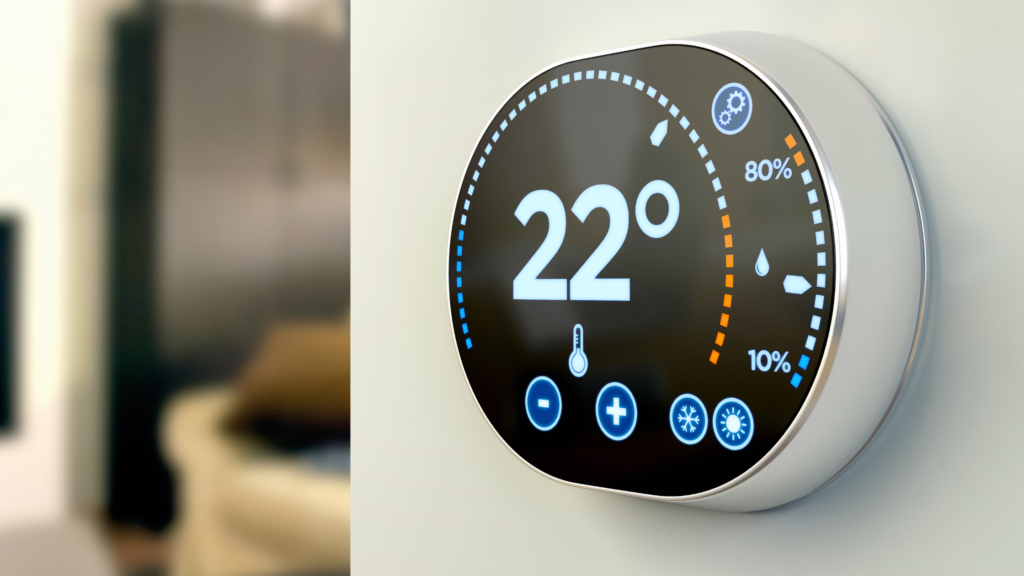
Table of contents
What affects thermal comfort?
- Air humidity level;
- the clothes we wear;
- physical activity level (whether we are sitting or doing something), etc.
All of this can adjust the desired room temperature.
Adjusting thermostats is very important for several fundamental reasons, first and foremost, for our own comfort and that of all family members and pets.
If the house is too warm, you may lack energy and it will be harder to concentrate. If the house is too cold, the risk of catching colds may increase, and if the cold is accompanied by humidity, we will have the unpleasant company of mold.

What should be the room temperature? The verdict of international organizations
So what is a normal room temperature? The Energy Saving Trust, a UK organisation that promotes sustainable and energy efficient use, It is recommended to heat the house to 18–21 °C in winter.This is the optimal room temperature.
The World Health Organization (WHO) states that for healthy and properly dressed people, the ideal temperature is 18 °CExperts from both organizations agree that this is the ideal temperature for sleep.
However, in practice, one more degree can be added: the house should be heated taking into account the age and health status of family members.
For example, for babies, young children, the elderly, and sick people, the temperature should be maintained at least 20 °C, and indoor temperatures above 25 °C can already negatively affect quality of life and health.
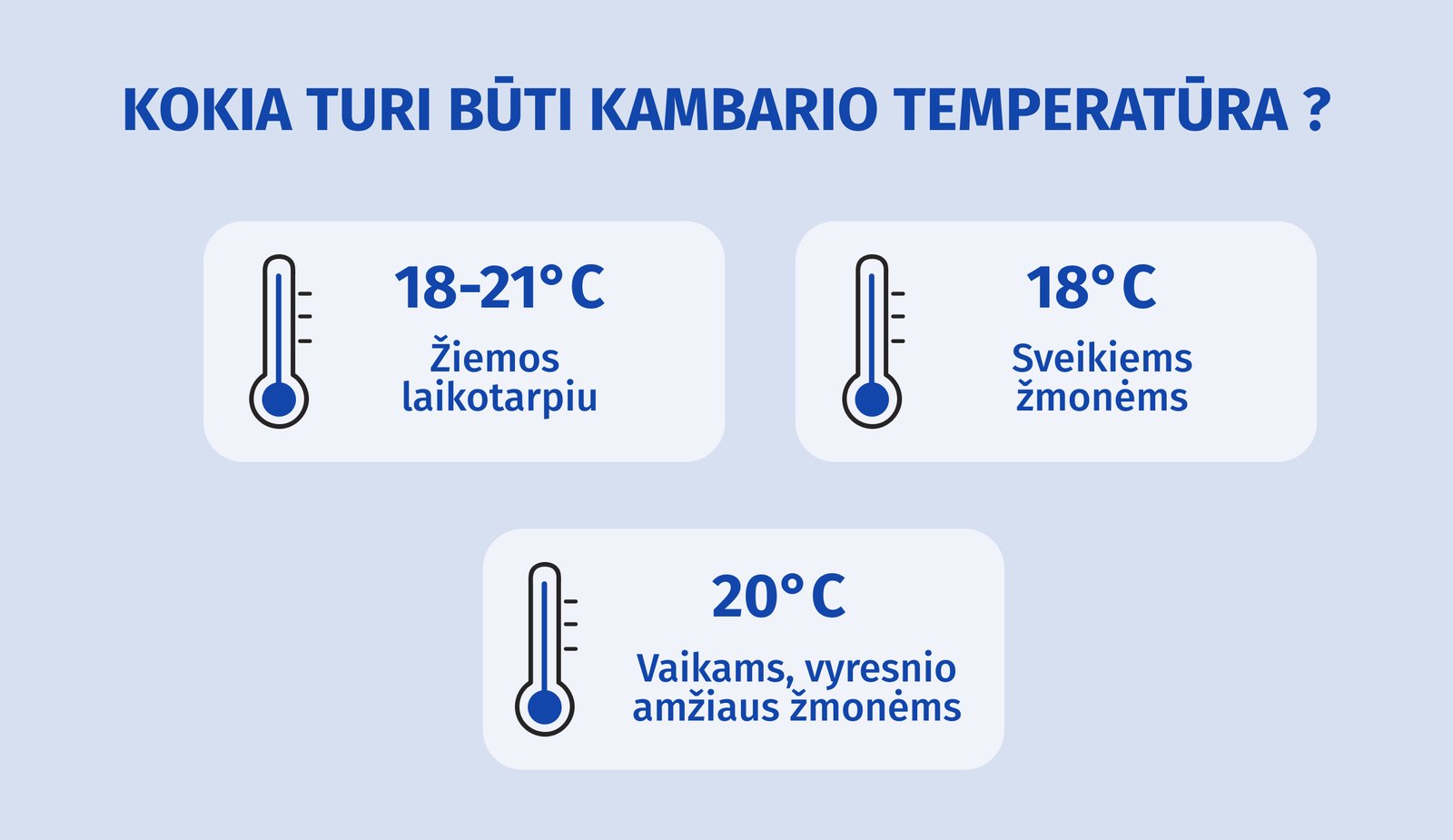
The ideal temperature for every room
After averaging, the average temperature in the room should be around 20 °C.However, you will probably want to maintain different temperatures in different rooms.
By setting the thermostat to 18–22 °C with the lever, you will heat your home economically and reduce the negative impact on the environment.
- Living room and study. The ideal temperature here is 20–22 °C. We spend a lot of time in these rooms, especially if we have to work from home, and it is still cooler when we are sitting than when we are moving.
- Kitchen. We usually move around in kitchens, so the temperature can be maintained a few degrees lower than, for example, in the living room.
- Bathroom. It is advisable to heat bathrooms to 22 °C or more, otherwise we will not feel very comfortable after getting out of the bath or shower. However, the thermostat can also be turned down when no one is bathing. Remember that the bathroom should be very well ventilated after bathing or constantly used moisture collectorsbecause unexpected mold may strike again.
- Bedroom. Bedrooms can be relatively cooler, around 17–19°C. Our body temperature also drops during sleep, and the coolness can help maintain the body's internal thermoregulatory function. However, the temperature in the bedrooms of babies and children should be slightly higher, up to 18–20°C, depending on age.
- Other spaces in the home where we spend less time are hallways, stairwells, laundry rooms, attics, closets, boiler rooms, etc. These rooms can also be kept at a lower temperature of around 15–18 °C. We would like to remind you once again that in laundry rooms, basements and other spaces where the temperature is lower and the humidity level exceeds the recommended norms, dehumidifiers/dehumidifiers will be very useful: you will both protect yourself from mold and avoid overpaying for heating rooms where you are not actually staying.
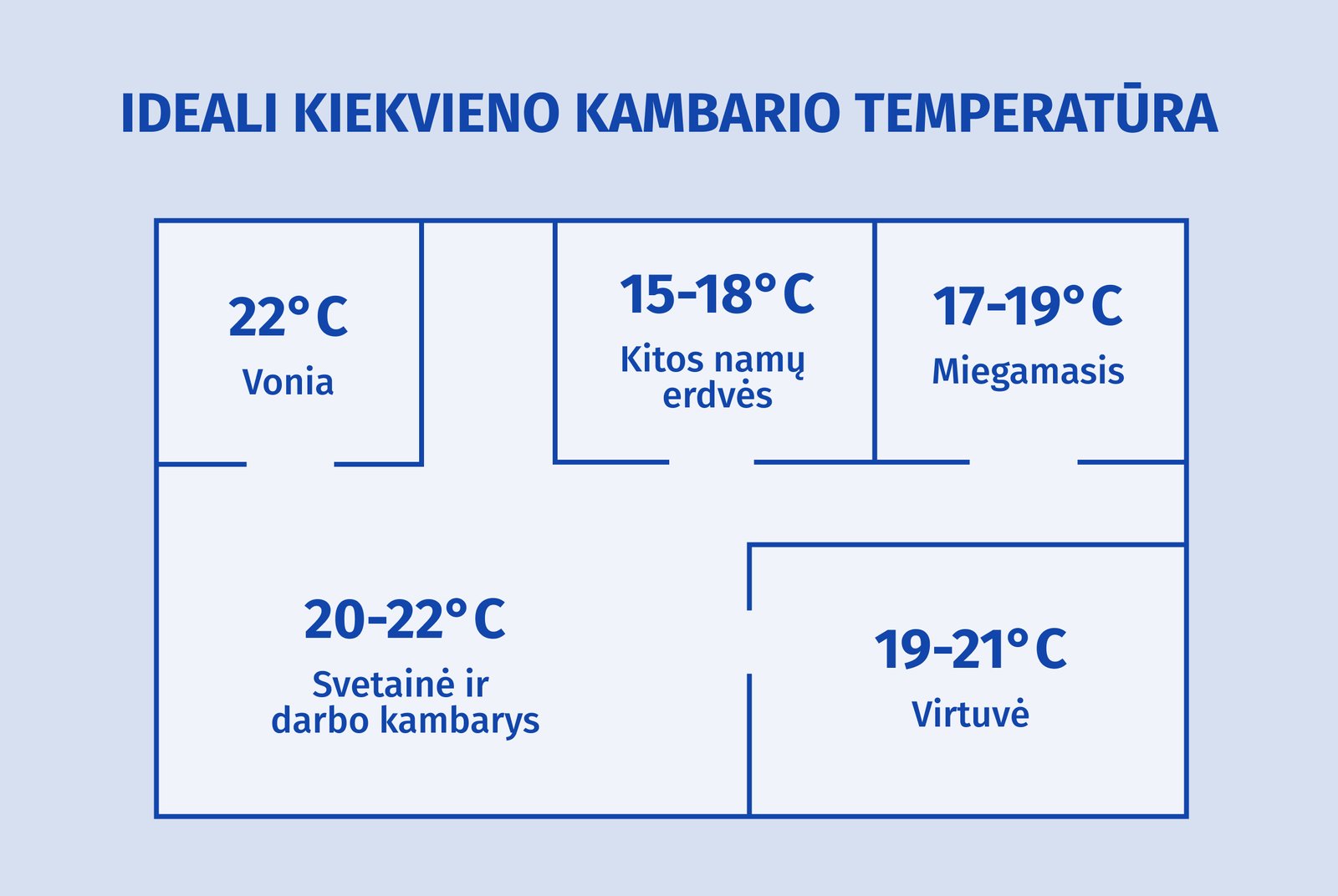
And what is the optimal humidity level at home?
It is necessary to be interested not only in what the normal room temperature is: we cannot ignore another indicator - the humidity level. Ideally, the humidity should not exceed 50 percent.
Too dry air at home
If the humidity level is significantly below 50 percent, it means that the indoor air is too dry., you may be heating the room too intensely.
Air that is too dry can dry out and irritate the lining of your nose and throat, increasing your risk of developing cold symptoms. Dry air can also negatively affect your skin, hair, some furniture, and even appliances.
In this case, it would be appropriate to use special humidifiers, which help maintain the necessary humidity level, good health and provide comfort.
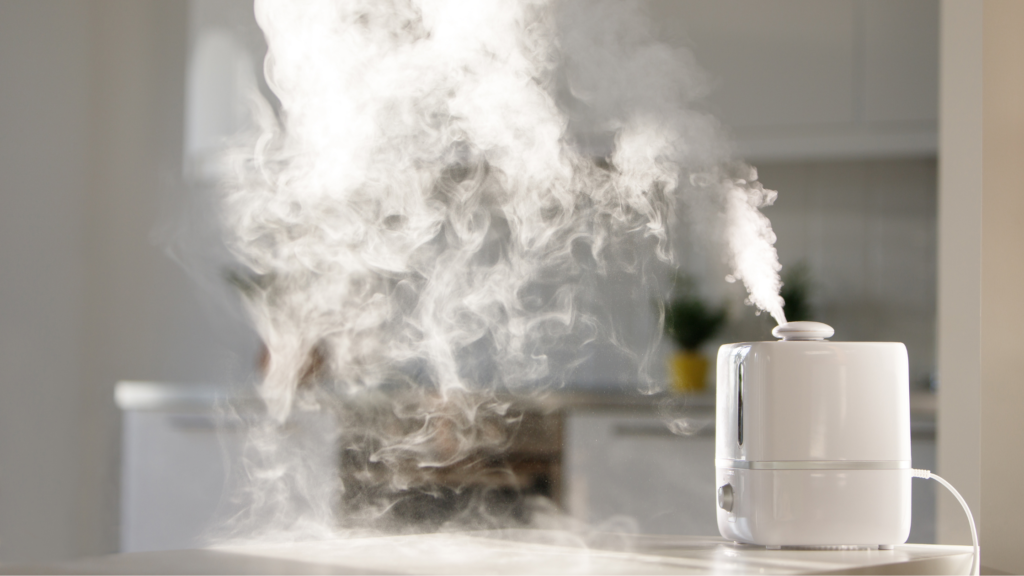
Excessive humidity levels in the home
And if the humidity level exceeds 60-70 percent, it means that the house is too humid., and excess moisture encourages the growth of microorganisms and mold, creating a favorable environment for dust mites to multiply.
It probably goes without saying that these pathogens cause allergies and are very harmful to your health. This problem can be easily solved by using the above-mentioned moisture collectors and getting settled recuperator / mini recuperator.
It's too cold at home: what to do?
All you need to do is buy a thermometer: it helps you understand that we live in a too cool environment and the room temperature is far from the recommended one.
Currently, various methods can be used to assess the humidity and temperature of floors, ceilings, corners, and interior walls.
If it is too cold or too humid at home, it is necessary to change the situation and do something to make the home warmer and cozier: warmth is what creates that feeling of comfort in the first place.
- During the winter, if family members are not allergic to dust mites, Carpets can be laid on the floor.: they are warmer than tiles and reduce heat loss.
- If the house itself is leaky, you should consider insulating it, replacing windows and doors, or maybe even an upgrade of the entire heating system.
- If this is not possible at the moment, it can be successfully used when the temperature drops more sharply. household heaters.
- It is true that the heating problem is acute not only in homes, but also in factories, warehouses and other commercial premises. They are suitable for heating infrared heaters.
So, to summarize, we can briefly mention that saving heat is not worth it, as it can have a negative impact on health.

